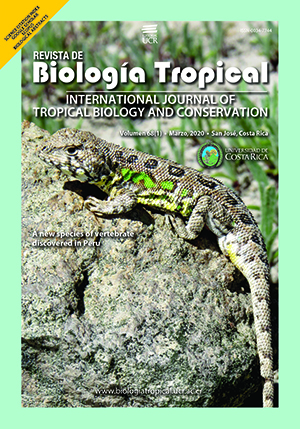Abstract
The genus Liolaemus presents great diversity among the current tetrapods. It is the second genus with the highest number of valid species described of the Iguana infraorder. In this study, we described a new species of sand lizard from the coastal lomas of Quilca, La Chira and Ocoña that belongs to the subgenus Eulaemus and group of Liolaemus montanus, all in the province of Camaná, department of Arequipa, Peru. To determine the taxonomic status of this new organism, we analyzed morphological, molecular and geographical characters. The morphological characters allowed the characterization and diagnosis of the new species, the molecular data was used to make a Bayesian inference, and the geographic data served to determine potential distribution areas. This lizard diverges from the other species of the Liolaemus montanus group for its small to medium size, several sets of morphological characters, folidosis and color pattern. It is also the only species of the genus where the males have a pattern of lateral spots of rounded shape with dark border and green interior, from the armpits to the middle of the body. Additionally, the molecular phylogenetic results made with the Cyt-b gene indicate that it has no direct relationship with the phenetically similar species described for the group; nevertheless, there is a relationship with geographically close populations, which has not been properly described. Finally, it was determined that this lizard has a very marked endemism and its populations are not abundant.
##plugins.facebook.comentarios##

This work is licensed under a Creative Commons Attribution 4.0 International License.
Copyright (c) 2020 Roberto Carlos Gutiérrez Poblete



